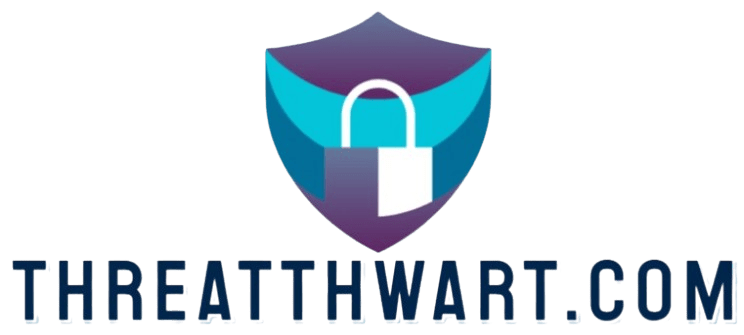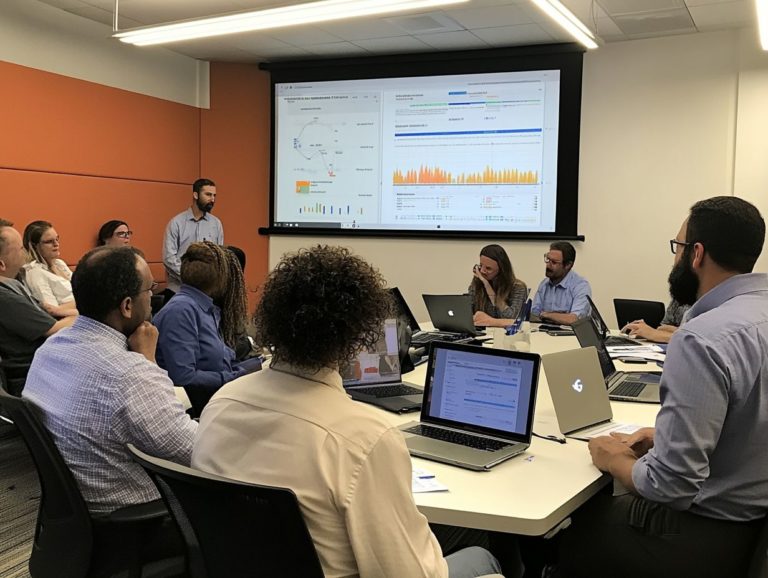effective vulnerability assessment strategies for 2024
In today s digital landscape, you cannot underestimate the importance of vulnerability assessments. Regular evaluations are vital for uncovering weaknesses in your security framework, safeguarding sensitive data, and ensuring compliance with regulations.
This article delves into various techniques, such as penetration testing, vulnerability scanning, and security audits. It also offers best practices for conducting these assessments. Additionally, it highlights emerging trends and challenges for 2024, providing you with essential tips and strategies to enhance your vulnerability assessment efforts.
Dive in and strengthen your defenses!
Contents
- Key Takeaways:
- The Importance of Vulnerability Assessment
- Top Techniques to Boost Your Vulnerability Assessment
- Best Practices for Conducting a Vulnerability Assessment
- Future Trends in Vulnerability Assessment
- Preparing for a Successful Vulnerability Assessment in 2024
- Frequently Asked Questions
- What are effective vulnerability assessment strategies for 2024?
- Why is it important to have effective vulnerability assessment strategies for 2024?
- What are some key components of effective vulnerability assessment strategies for 2024?
- How can organizations stay up-to-date with effective vulnerability assessment strategies for 2024?
- Are there any challenges to implementing effective vulnerability assessment strategies for 2024?
- How can organizations measure the effectiveness of their vulnerability assessment strategies for 2024?
Key Takeaways:

Regular vulnerability assessments are crucial for identifying and addressing security weaknesses in an organization’s systems and processes. Prioritizing vulnerabilities and promoting collaboration are key best practices for conducting effective assessments. As technology continues to advance, staying informed about emerging techniques and potential challenges is essential for successful vulnerability assessments in 2024.
The Importance of Vulnerability Assessment
A vulnerability assessment is a process of identifying and fixing security weaknesses. It serves as a cornerstone of cybersecurity, enabling organizations like yours to pinpoint, evaluate, and address vulnerabilities within systems and applications.
As the threat landscape continually shifts, embracing proactive strategies becomes essential. It s not just about identifying potential weaknesses; it s about implementing risk-based approaches, ensuring continuous monitoring, and cultivating effective incident response mechanisms.
This holistic focus strengthens your organization s security level and helps maintain compliance with industry regulations.
Understanding the Need for Regular Assessments
Regular vulnerability assessments are crucial for maintaining your organization’s cybersecurity level. They ensure that potential risks are identified and managed effectively.
By adopting a strategy of continuous monitoring, you can stay ahead of emerging threats and navigate the ever-evolving landscape of cybersecurity challenges. This proactive approach helps you identify existing vulnerabilities and recognize new ones that may emerge.
Keeping your asset lists up to date is essential; these lists enable your teams to prioritize assessments and implement a risk-based methodology.
By evaluating which vulnerabilities pose the greatest threat to your valuable assets, you can allocate resources more efficiently and enhance your overall security framework.
Top Techniques to Boost Your Vulnerability Assessment
You ll find a variety of techniques employed in vulnerability assessment, each providing distinct advantages for identifying and prioritizing potential vulnerabilities within your organization s infrastructure and applications.
Penetration Testing
Penetration testing involves simulating real-world attacks on your systems to pinpoint vulnerabilities that malicious actors might exploit. This proactive approach equips you with critical insights, enabling you to strengthen defenses before actual threats can take advantage of any weaknesses.
By utilizing various methodologies like black-box, white-box, or gray-box testing you can customize your assessments based on your specific environment and the evolving threat landscape. Integrating incident response and threat intelligence into the penetration testing process elevates your overall security framework.
This approach allows you to quickly fix vulnerabilities and understand how emerging threats might affect your organization. It ultimately enhances the effectiveness of your security measures.
Start implementing these best practices today to protect your organization.
In summary, regular vulnerability assessments, ongoing monitoring, and proactive strategies are essential in maintaining strong cybersecurity. By utilizing effective techniques and staying informed on emerging challenges, you can significantly enhance your organization’s security measures.
Vulnerability Scanning

Vulnerability scanning is an automated process designed to identify known vulnerabilities across your systems and applications. This proactive approach helps you find weaknesses before malicious actors can exploit them.
These tools speed up identifying vulnerabilities and improve the accuracy of your assessments.
By enabling continuous scanning, you can make regular updates to your security posture, ensuring that any emerging threats are promptly identified.
When integrating vulnerability scanning tools into your cybersecurity strategy, it s crucial to establish a clear selection process, prioritize scanning schedules according to risk profiles, and provide staff with the training needed to interpret the results effectively.
This strategic incorporation is crucial for your defense right now against the ever-evolving landscape of cybersecurity threats.
Security Audits
Security audits are thorough evaluations of your organization’s security policies, practices, and controls. They identify gaps and ensure compliance with regulatory standards.
These assessments are essential in the broader context of vulnerability assessment, as they help pinpoint weaknesses that cyber threats could exploit. By conducting a meticulous gap analysis during the audit, you can uncover discrepancies between your current security measures and the standards you aim to meet.
The insights you gain from the audit findings can significantly influence your vulnerability management strategies, allowing you to prioritize remediation efforts effectively.
This focused approach not only enhances your overall security but also cultivates a culture of continuous improvement, ensuring ongoing compliance and resilience against potential cyber-attacks.
Best Practices for Conducting a Vulnerability Assessment
To conduct effective vulnerability assessments, adopt best practices that encompass various facets of your cybersecurity framework.
This includes establishing robust processes for network segmentation and implementing diligent patching cycles.
Identifying Key Assets and Prioritizing Vulnerabilities
Identifying key assets within your organization is essential for prioritizing vulnerabilities and effectively allocating resources to tackle the most critical risks. This foundational step strengthens your overall security posture and facilitates efficient resource management.
By maintaining comprehensive asset lists, you gain clarity on which assets are most vital to your operations. Utilizing gap analysis further enables you to uncover vulnerabilities that might otherwise slip under the radar.
When you prioritize vulnerabilities based on their associated risks, your team can focus on those that could inflict the most significant damage. This strategic approach ensures that pressing issues are addressed promptly and optimizes resource allocation, enhancing your defenses without overstretching your capabilities.
Collaboration and Communication
Effective collaboration and communication among stakeholders are crucial for executing vulnerability assessments and implementing necessary remediation actions successfully.
Involving relevant departments, such as IT, legal, and human resources, enriches the assessment process by ensuring that every perspective is considered.
When each team understands its role and responsibilities, it creates an environment where information flows effortlessly. This clarity facilitates timely incident responses and strengthens adherence to cybersecurity compliance requirements.
By harnessing collaborative efforts, diverse expertise converges, leading to more robust solutions and a fortified security posture.
When organizations break down silos, they navigate the complexities of cybersecurity challenges more effectively.
Future Trends in Vulnerability Assessment

As technology continues to evolve, you can anticipate that future trends in vulnerability assessment will be significantly influenced by advancements in artificial intelligence and machine learning.
Get ready! These innovations will supercharge your ability to find vulnerabilities, making your security measures more robust and proactive.
Emerging Technologies and Techniques
Emerging technologies like cloud security solutions and advanced threat intelligence tools are transforming the way you assess vulnerabilities. These innovations streamline the identification of potential weaknesses and enable you to respond swiftly and effectively.
For example, automation tools facilitate continuous monitoring and real-time reporting. This frees your security teams to focus on critical tasks instead of getting bogged down in manual processes.
Cloud security frameworks provide scalable solutions tailored to the unique challenges of dynamic environments. They promote taking steps ahead of time to manage risks. By leveraging these technologies, you can enhance your overall vulnerability management strategies and establish a more resilient security posture against evolving threats.
Anticipated Challenges
Organizations embarking on vulnerability assessments may encounter several challenges. Notably, the increasing sophistication of cyber threats such as ransomware and the complexities of managing cyber insurance are significant issues.
You will need to review large amounts of data and scanning results. This may require skilled personnel who have the technical expertise essential for accurately identifying and prioritizing vulnerabilities.
The ever-evolving threat landscape demands that your team stay informed about new attack vectors and tactics. This complicates your efforts even further.
Understanding cyber insurance policies can be challenging. Your organization needs to grasp how effective vulnerability management affects your coverage options and potential payouts in the unfortunate event of a cyber incident.
Preparing for a Successful Vulnerability Assessment in 2024
To set the stage for a successful vulnerability assessment in emerging technologies in 2024, you should embrace a proactive mindset. Employ effective strategies designed to elevate your security posture.
Tips and Strategies for Effective Assessments
Employing effective strategies and tips is crucial for conducting thorough vulnerability assessments. These assessments should accurately reflect your organization s security posture and readiness for potential threats.
To achieve this, prioritize integrating advanced security tools specifically designed for detection and response. Regularly updating these tools ensures they can effectively identify emerging vulnerabilities and threats.
Another key aspect is conducting assessments at scheduled intervals. This helps capture any changes in your IT environment promptly.
Engaging stakeholders across departments is vital. Their insights can significantly enhance the assessment process.
These best practices boost your proactive security efforts and align seamlessly with your broader vulnerability management goals. Ultimately, they fortify your organization against potential attacks.
Frequently Asked Questions

What are effective vulnerability assessment strategies for 2024?
Effective vulnerability assessment strategies for 2024 refer to the methods used to identify and mitigate potential security weaknesses in an organization’s systems and networks. These strategies evolve constantly to keep up with the changing threat landscape and advancements in technology, including the latest vulnerability assessment trends in 2024.
Why is it important to have effective vulnerability assessment strategies for 2024?
Organizations must act now to implement effective vulnerability assessment strategies. These strategies protect sensitive data and systems by identifying potential weaknesses that cybercriminals can exploit.
What are some key components of effective vulnerability assessment strategies for 2024?
Some key components include regular vulnerability scanning, penetration testing, patch management, and employee training. Together, these components identify, prioritize, and address vulnerabilities in your systems and networks.
How can organizations stay up-to-date with effective vulnerability assessment strategies for 2024?
Organizations need to regularly review and update their security protocols.
They must stay informed about new threats and technologies.
Are there any challenges to implementing effective vulnerability assessment strategies for 2024?
Yes, implementing effective strategies can be challenging.
Resource constraints, lack of expertise, and resistance to change are common hurdles.
Organizations must tackle these issues. Providing the right resources is crucial for success.
How can organizations measure the effectiveness of their vulnerability assessment strategies for 2024?
Organizations can track key metrics to measure effectiveness.
Look at the number of vulnerabilities identified, the time to patch, and overall security improvements.
Regular audits and third-party assessments also offer valuable insights.






